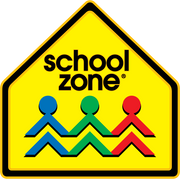by Lis Thomas at Entreprenista Mama/Womanhood Unwrapped
You know the drill. If you’re a working-from-home parent or a parent of young children trying to help prepare them for preschool or kindergarten, you know what it’s like to encourage your kids to play together—let alone work together!
Maybe it’s that siblings are at different stages of the learning process. Or, they can’t agree or distract each other during your well-thought-through and supposed-to-be-fun educational activity.
I get it. My six-year-old and nine-year-old are the masters of bickering, destruction, and pushing mommy to the limit. By the end of the workbook or activity, you’re burnt out, frustrated, and a bit on edge, and your sweet little darlings are no further along the road to learning.
But all of that doesn’t mean that you as a mom, dad, educator, or babysitter, can’t find a way to make those critical educational learning activities collaborative and fun for your kiddos.
Here are five things I’ve learned from teaching my children from home during the Coronavirus pandemic that have changed my world and encouraged my children to collaborate and have fun with their learning.
Plan ahead, and let them help
A little planning never hurt any parent (or educator). I know, I know, it’s hard to add one more thing to your already overflowing plate—especially when working from home with kiddos bouncing off the walls, but it can seriously save you time and a massive headache later.
The cool thing about planning ahead, is that you can create an opportunity for the kiddos to be part of the process and collaborate with each other.
Let them take turns deciding what lesson or activity will come first, and then alternate between that and choosing which will come last!

Separate yet harmonious
Whether you are working on teaching children of the same age or of different ages in a collaborative at-home setting, putting together activities that allow the children to work separately but on the same concept, can be a great way to encourage collaboration while still avoiding competition.
For example, my son, who starts kindergarten in the fall, works on mastering the alphabet right now.

The School Zone Alphabet Writing & Drawing Tablet Workbook is perfect for him, but he gets upset when his sister, nine and thoroughly reading, corrects his work. She, on the other hand, is working on expanding her vocabulary. So I will have her read while he is working on his letters. Then, when they both have reached their time limit, we’ll all sit down and look through my daughter’s book for words that start with each letter of the alphabet. It’s a way for her to tell him about what she’s reading and for him to show her what he’s learned!
Note: With younger children, or children of the same age, you can sit down and do the same exercise in their workbooks after each activity. Like, “find the A!”, “find the Z!”, etc.
One-on-one problem-solving
If you are always hovering over your little’s shoulders, it will be all that much harder for them to collaborate and have fun with the learning. Yes, yes. Giving them time to complete a task together can lead to an argument (or five!), but it can also create space for them to problem-solve together and create and complete something on their own!
I try to plan at least one activity or lesson a day that requires both my kiddos to complete it; for example, the

Hidden Pictures Activity Workbook from School Zone is the perfect one-on-one activity! Both kids can find the missing items in the pictures, and they are forced to work together to do it. If I don’t remove myself, they lean on me instead of each other to solve the puzzle.
Little sprints
It’s naturally fun for kids to race each other, or themselves, to solve a problem—especially if it’s positively positioned and non-competitive.
I love ending the day with a little sprint, followed by a reward of some kind--like time in the sprinkler, or a treat.
You can set up sprints for separate things, while still allowing them to do it together. Keep it under five minutes and cheer them on!

Taking turns with one of the School Zone flash card sets (age appropriate of course), is the perfect summer or homeschool sprint activity!
Pause for play
Lastly, but most importantly, don’t forget to pause when things are getting a little frazzled and let them take a play break! Most often, if the break is short and followed by some concentrated learning time, they’ll be so excited that they’ll even play together!
If a little motivation is needed, give them a specific game to play that requires them both—say, freeze tag! Who knows, you might even want to take a turn.
More than any of the above ideas, don’t forget to give yourself grace in the daily process of raising and schooling kids. Some days go like a dream, and others are more like an obstacle course. Collaboration can be on the fly or in small doses and still be effective!










